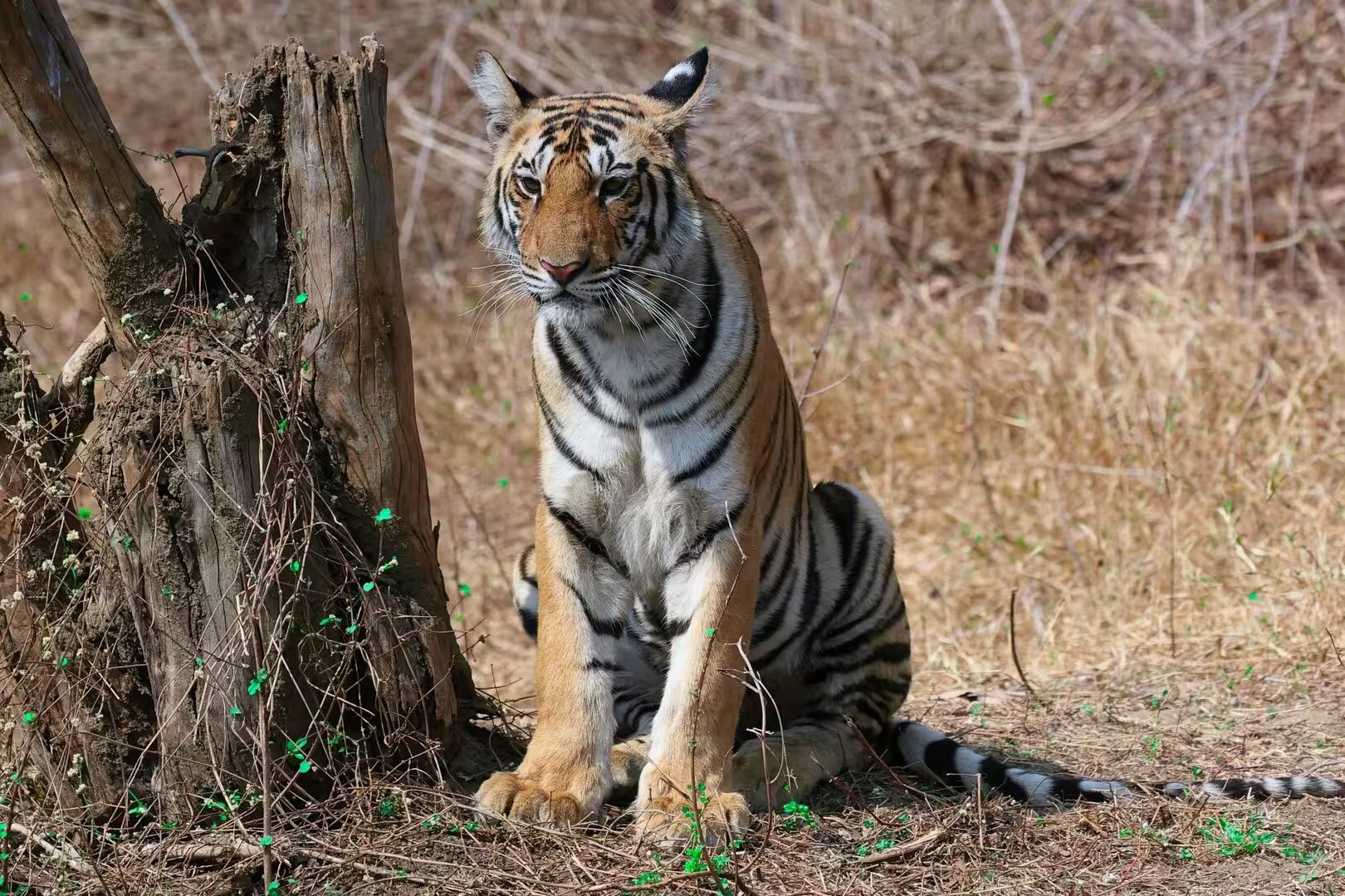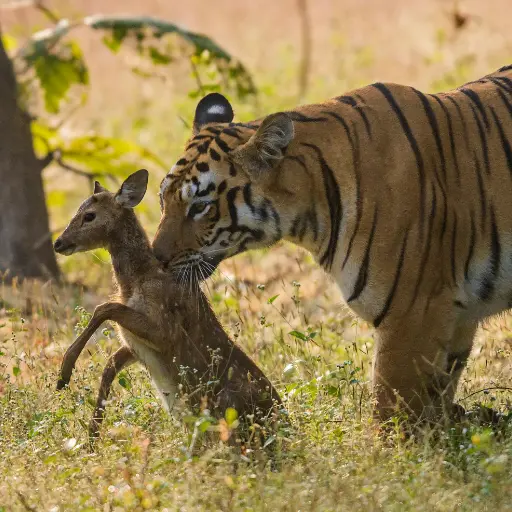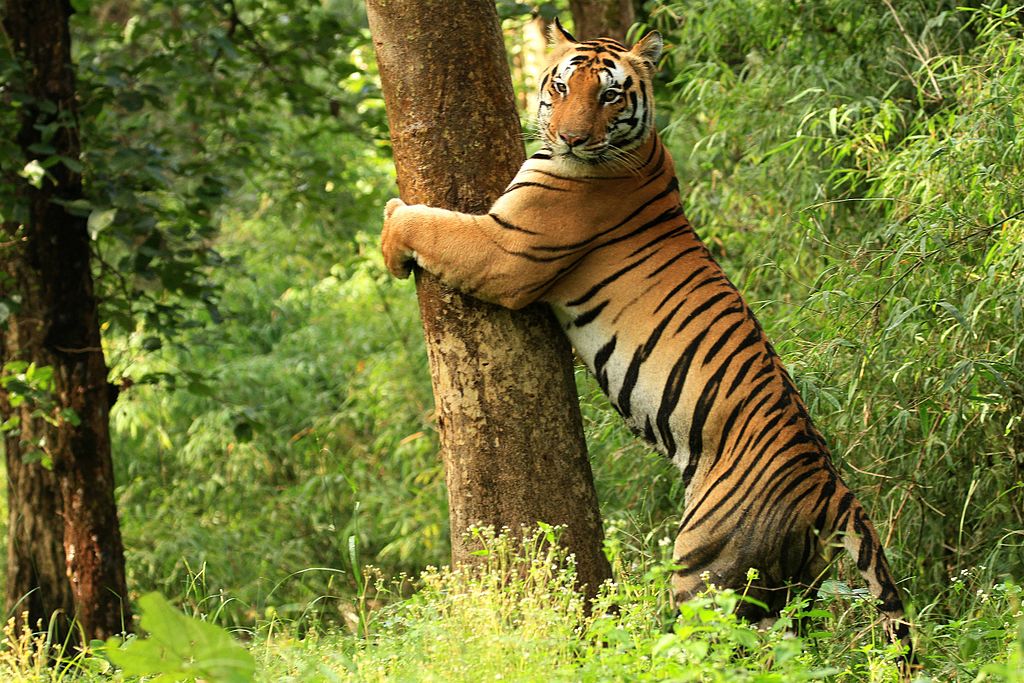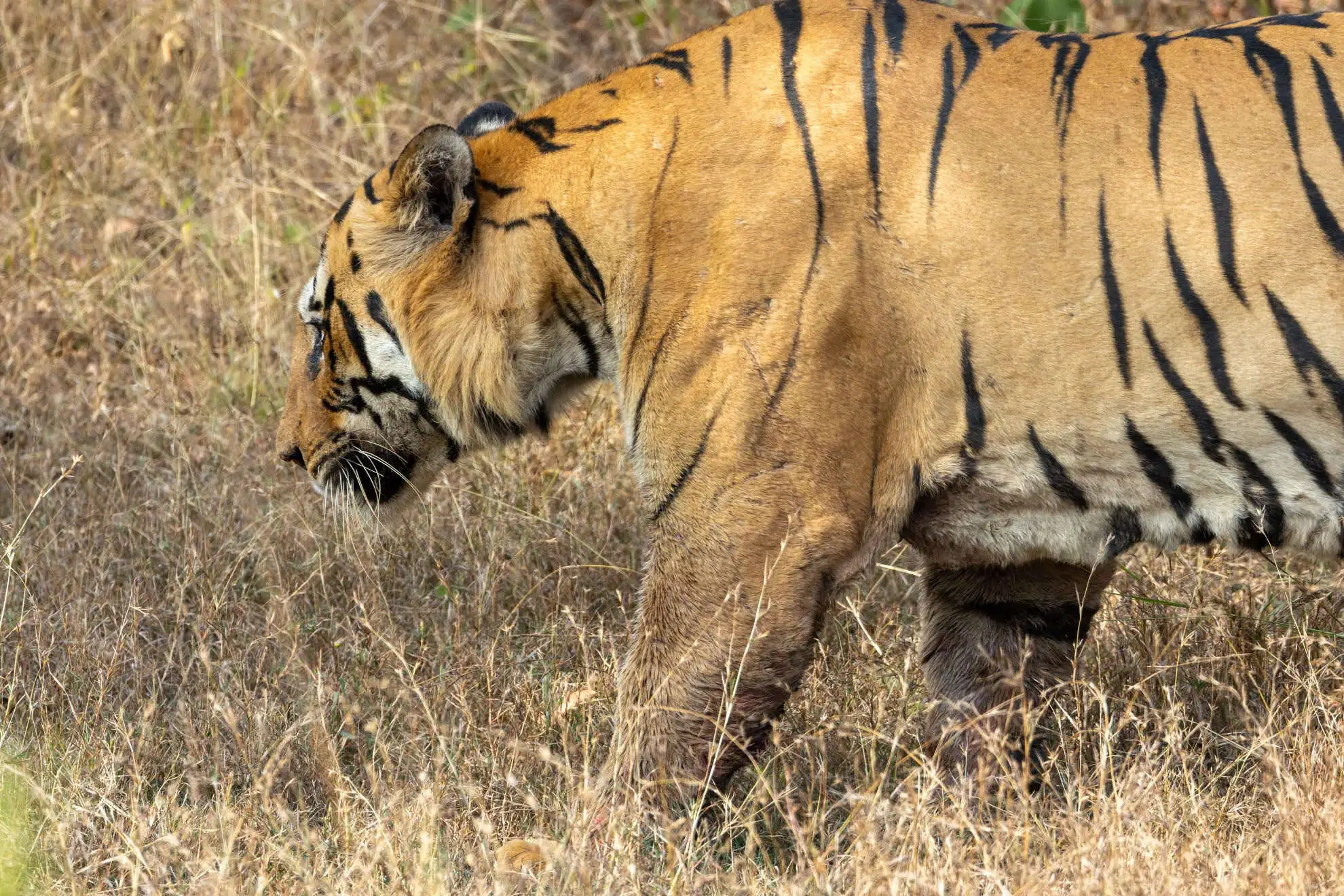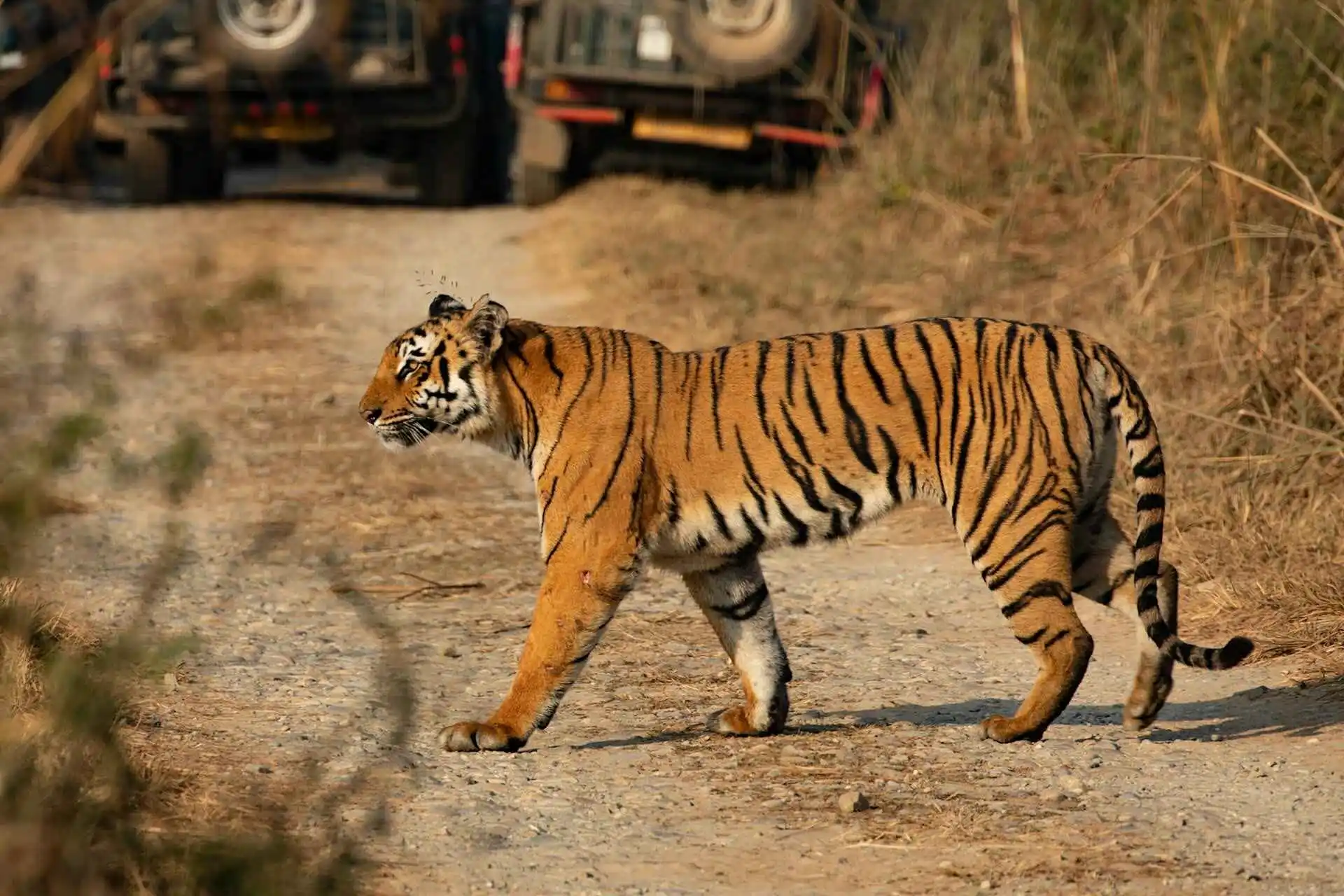India is the world’s largest home for Royal Bengal Tigers. India hosts more than 70% of the total Tigers in the world. It is no surprise then that we are also prime targets for tiger hunters and poachers. To overcome this threat Project Tiger was launched in 1973 in India.
Since the population of these beautiful big cats is spread across many states in India, the responsibility of protecting those falls upon the government. Project Tiger is the government’s response to this call of duty.
How Project Tiger was started in India?
Back in the early 19th century, There were about 40,000 Royal Bengal Tigers in India. Within seven decades, Royal Bengal Tiger’s population dwindled to a mere 1800. It was not only shocking and alarming but also a reflection of the neglect that was being heaped upon the National Animal of India. It was an undeniable failure.
In light of the scathing criticism brought on by these stats, the government looked into the issue and initiated steps to revive the tiger population in the country. Project Tiger in India was launched on 1st April 1973 as a major wildlife conservation project in India. It was launched from the Jim Corbett National Park of Uttarakhand.
The initiative is funded by the Union Govt. of India and administrated under the Ministry of Environment, Forests and Climate Change. National Tiger Conservation Authority (NTCA) is the immediate supervising agency.
DOWNLOAD the complete “list of Tiger Reserves” in India PDF format with the core area, buffer area, and total area updated till 2019.
Aim to start Tiger Project in India
The stated aims of Project Tiger were
- To identify factors causing a reduction in tiger habitats and mitigate them through suitable management practices. The damages already done to the habitat were to be corrected so that the natural ecosystem can be recovered to the extent possible.
- To maintain a viable tiger population for their economic, ecological, cultural, and aesthetic significance
When was Project Tiger launched?
Project Tiger was launched in the year 1973. It was one of the most important conservation efforts initiated to protect Tigers in India. It was the first of its kind of Project in India to maintain the population of Tigers in India and to protect them from Poaching and other threats.

History of Tiger Project in India
Initially, When Project Tiger was rolled out in 1973, nine tiger reserves encompassing an area of 9,115 sq km were identified to be brought under special protection. By the late 1980s the number of protected tiger reserves increases from 9 to 15. And a total area of 24,700 sq. km of forested land was reserved for the Tigers.
By 1984, the number of tigers present in Project Tiger reserves reached above 1100. In the next few years, more and more tiger habitats were added to the Project Tiger. By the year 1997 there were 23 tiger reserves stretched over an area of 33,000 sq. km were being protected under Project Tiger in India.
However, even as the range of protected areas continued to expand, the number of tigers didn’t increase considerably.
Tiger Census (Counting of Tigers)
The first Tiger Census of 2006 projected 1,411 tigers were left in the country. Since the census methods used were technology-based, the results were more believable.
The results estimated a total tiger population at 1,411 individuals ranging from 1,165 to 1,657 adult and sub-adult tigers. 2006 Census created a second round of stir and debate around tiger conservation. Protection efforts have increased manifold since then.
Owing to the renewed sincerity to Tiger conservation, the number of tigers consistently increased in the next decade. 2014 Tiger Census-estimated 2,226 Bengal tigers in India and 2018 Tiger Census-estimated 2,967 Tigers.
Karnataka was the state with the highest tiger population in 2014. The recorded tiger count in the state was 408 as per the 2014 tiger census.
But, in 2018 Tiger Census, The crown of the Tiger State of India is been taken away by Madhya Pradesh with 526 Tigers, whereas Karnataka and Uttrakhand were second and third in position with 524 and 442 Tigers respectively.
Whereas in 2022 Tiger Census, Madhya Pradesh retained the crown of Tiger State with 785 Bengal Tiger Population.
The total Tiger Population as per the Tiger Census 2022 is 3,682 Tigers, which was 24% more than the 2018 Census.
Today, Project Tiger looks after 55 tiger reserves spread across 78,735.59 sq. km. of green cover in an effort to conserve the population of the Royal Bengal Tiger
Popular Tiger Safari Parks

Project Tiger’s Management
NTCA administers Project Tiger completely. And for the same various conservation units have been established consisting of a field director and a group of technical people to assist. Various conservation units that have been formed to help Project Tiger in India are:
- Eastern Ghats Conservation Unit
- Western Ghats Conservation Unit
- Central India Conservation Unit
- North-East Conservation Unit
- Sariska Conservation Unit
- Kaziranga Conservation Unit
- Shivalik Terai Conservation Unit
- Sunderbans Conservation Unit
Core-Buffer Strategy in Project Tiger
For the sake of efficient management and tiger density-based administration, tiger reserves are created on the basis of a ‘core-buffer’ strategy.
A particular expanse of land is identified and marked as the ‘core area of the reserve. These areas are kept free of all human activities. It usually has the legal status of National Park or Wildlife Sanctuary. No human activity is allowed inside the core area, including tourism. Even everyday tasks such as grazing and wood collection are banned.
The buffer areas usually surround the core area and are comparatively less frequented by the resident wildlife. Hence, limited human interaction here will not harm their habitat. Hence, it is subjected to ‘conservation-oriented land use’. Certain everyday activities necessary for daily life and living of surrounding villages are allowed.
The buffer area serves twin purposes. One, it serves as a habitat supplement to the spillover population of wild animals from the core area. Two, it becomes a livelihood source for surrounding villages and relieves their impact on the core zone.
The plan of action for each tiger reserve is drawn upon the following key principles:
- Elimination of all human interference from the core area and careful rationalization of activities in the buffer area
- Limiting the habitat management practices to only repair activities for ecosystem damage
- Monitoring the floral and faunal changes overtime for research
To counter poaching, wireless communication systems and outstation patrol camps have been deployed within the tiger reserves. Fire protection is ensured through preventive and control measures. Compensatory developmental works have improved water availability which in turn betters vegetation. Lush vegetation cover helps in increasing the tiger prey base.
Village relocation is one of the significant steps as well as a hurdle to reserve management in core zones. While some villages relocate voluntarily, most others resist giving up their ancestral dwellings. The issue gets even more sensitive in the case of tribal communities.
The Indian Government passed the Forest Rights Act in 2006 which recognized the right of some forest communities to their native forest area. Recognition of this right is bound to have a serious implication of tiger conservation efforts, the extent of which is yet to be determined.
Popular Tiger Safari Packages in India
The success of Project Tiger
India was facing a huge challenge in the conservation of Tiger, with only 1200 Tigers left in the wild, It was a great threat to these beautiful Big Cat. But a Great Thanks to NTCA to launch Project Tiger in 1973.
The tiger population now is around 3,000, which is still not healthy and stable, but thanks to Project Tiger. It’s all because of efforts of NTCA and Tiger Project Team
Royal Bengal Tigers population is still a point of concern, but at least it is increasing and more people are coming together to conserve Tigers, many people are now aware of the conservation measures and participating actively in wildlife conservation-related activities.
Facts about Tigers in India
- India hosts a total of 75% tiger population of the world
- The result of the last Tiger Census 2022 was declared on 09 April 2022.
- The total number of tigers in India is 3682 as per the latest 2022 Tiger Census report.
- India is the only country to host three prime members of Big Cats Family; Lion, Tiger, and Leopards
- India has more than 100 National Parks and 55 Tiger Reserves
List of Project Tiger. Tiger Reserves in India
Below is the list of tiger reserves in India under Project Tiger.
| Sr. | Tiger Reserve (TR) Name | State | Estd.Year | Total Area |
|---|---|---|---|---|
| 1 | Corbett TR | Uttarakhand | 1973 | 1288 |
| 2 | Bandipur TR | Karnataka | 1973 | 1456 |
| 3 | Kanha TR | M.P. | 1973 | 2051 |
| 4 | Manas TR | Aasam | 1973 | 2837 |
| 5 | Sunderbans TR | West Bengal | 1973 | 2584 |
| 6 | Melghat TR | Maharashtra | 1973 | 2768 |
| 7 | Ranthambore TR | Rajasthan | 1973 | 1411 |
| 8 | Palamau TR | Jharkhand | 1973 | 1129 |
| 9 | Similipal TR | Odisha | 1973 | 2750 |
| 10 | Periyar TR | Kerela | 1978 | 925 |
| 11 | Sariska TR | Rajasthan | 1978 | 1213 |
| 12 | Buxa TR | West Bengal | 1983 | 757 |
| 13 | Indravati | Chhatisgarh | 1983 | 2799 |
| 14 | Namdapha | A.P. | 1983 | 2025 |
| 15 | Dudhwa | U.P. | 1987 | 2201 |
| 16 | Kalakad Mundanthurai | Tamil Nadu | 1988 | 1601 |
| 17 | Valmiki TR | Bihar | 1989 | 899 |
| 18 | Pench TR | M.P. | 1992 | 1799 |
| 19 | Tadoba TR | Maharashtra | 1995 | 1727 |
| 20 | Bandhavgarh TR | M.P. | 1993 | 1530 |
| 21 | Panna TR | M.P. | 1994 | 1599 |
| 22 | Dampa TR | Mizoram | 1994 | 988 |
| 23 | Bhadra TR | Karnataka | 1998 | 1064 |
| 24 | Pench TR | Maharashtra | 1992 | 741 |
| 25 | Pakke TR | A.P. | 2002 | 1198 |
| 26 | Nameri TR | Assam | 1998 | 464 |
| 27 | Satpura TR | M.P. | 2000 | 2133 |
| 28 | Anamalai TR | Tamil Nadu | 2008 | 1480 |
| 29 | Udanti Sitanadi | Chhatisgarh | 2008 | 1842 |
| 30 | Satkosia TR | Odisha | 2008 | 964 |
| 31 | Kaziranga TR | Asssam | 2006 | 1174 |
| 32 | Achanakmar TR | Chhatisgarh | 2008 | 914 |
| 33 | Dandeli Anshi TR | Karnataka | 2008 | 1097 |
| 34 | Sanjay Dubri TR | M.P. | 2008 | 1675 |
| 35 | Mudumalai TR | Tamil Nadu | 2010 | 689 |
| 36 | Nagarhole TR | Karnataka | 1999 | 1206 |
| 37 | Parambikulam TR | Kerala | 2010 | 644 |
| 38 | Sahyadri TR | Maharashtra | 2008 | 1165 |
| 39 | Billi Ranganatha Temple TR | Karnataka | 2010 | 575 |
| 40 | Kawal TR | Telangana | 2012 | 2015 |
| 41 | Sathyamangalam TR | Tamil Nadu | 2013 | 1408 |
| 42 | Mukundra Hill TR | Rajasthan | 2013 | 760 |
| 43 | Navagaon Nazgira TR | Maharashtra | 2012 | 1895 |
| 44 | Nagarjunsagar Srisailam TR | A.P. | 1982 | 3296 |
| 45 | Amrabad TR | Telangana | 2014 | 2611 |
| 46 | Pilibhit TR | U.P. | 2014 | 730 |
| 47 | Bor TR | Maharashtra | 2014 | 816 |
| 48 | Rajaji TR | Uttarakhand | 2015 | 1075 |
| 49 | Orang TR | Assam | 2016 | 493 |
| 50 | Kamlang TR | A.P. | 2016 | 783 |
| 51 | Srivilliputhur-Megamalai TR | Tamil Nadu | 2021 | 1016 |
| 52 | Ramgarh Vishdhari TR | Rajasthan | 2021 | 1502 |
| 53 | Ranipur TR | U.P. | 2022 | 529 |
| 54 | Veerangana Durgavati TR | M.P. | 2023 | 2339 |
| 55 | Dholpur - Karauli TR | Rajasthan | 2023 | 599 |
| 56 | Guru Ghasidas - Tamor Pingla TR | Chhattisgarh | 2024 | 2829.38 |
| 57 | Ratapani TR | Madhya Pradesh | 2024 | 1271.4 |
| 58 | Madhav TR | Madhya Pradesh | 2025 | 1751 |
Statewise list of Tiger Reserves in India in PDF Format
DOWNLOAD the complete “list of Tiger Reserves” in India PDF format with the core area, buffer area, and total area updated till 2019.

